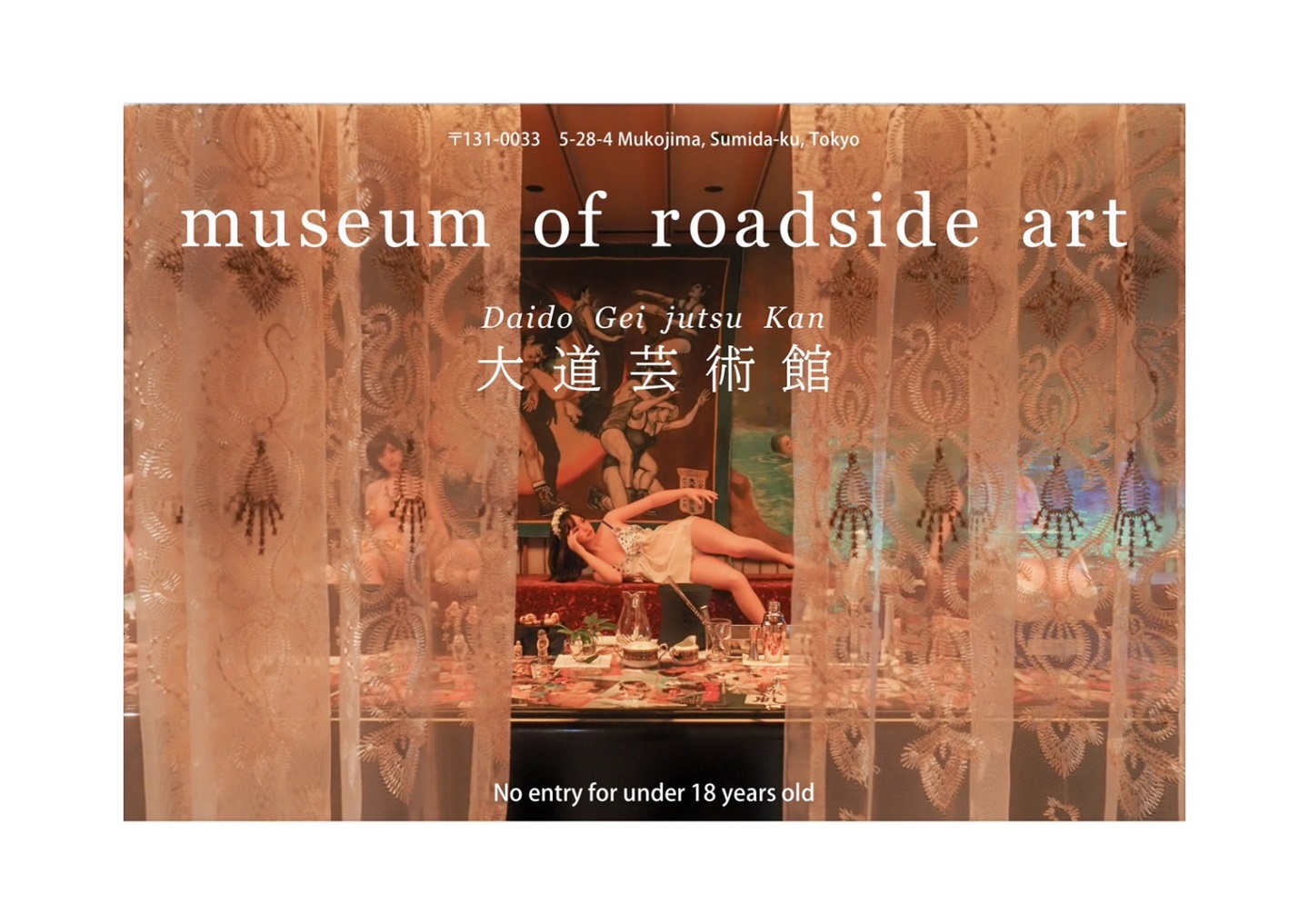アーティスト
大道芸術館 museum of roadside art
大道芸術館@大道芸術館

昭和の純喫茶、昭和の歌謡曲、昭和のラブホテル……
半世紀近く前の日常文化が、いま熱く語られている。
半世紀前には生まれてすらいなかった若者たちによって。
いまだ日本最大の集客記録である6千万人以上が集い「人類の進歩と調和」を目撃した、
1970年の大阪万博で頂点に達したあの時代。
あちこちの観光地に、祭の場に、路傍に咲いた昭和元禄の徒花たち。
それはもう昭和を知らない若者の幻想にしか花を咲かせられないのか。
美術館は珍しいもの、ひとつしかないものを集め見せてくれる。
どこにでもあったもの、たくさんあったものは、ほとんど忘れられ、いつのまにか消えていくだけだ。
そうやって僕らはひとつ、またひとつ宝物を失っていく。失ってから気がつくことを繰り返しながら。
長いあいだ日本の路傍をさまよいながら、光と陰のあいだに矢のごとく消えていく文化のかけらを拾い集めてきた。
そのいくつかをここに見せる場ができて、失われた文化の残像だけでも甦らせることができたら、もう半世紀近くなった僕の旅もまったく無駄ではなかったことになるだろう。
都築 響一
Showa’s most spectacular expression came in 1970, with the Osaka
70 expo. It was the biggest single event in Japanese history, a showcase of new science, culture and manufacturing that drew some 60 million visitors. The vision was the ‘progress and harmony of mankind.’
The then-prime minister dubbed the age ‘Showa Genroku,’ after the 17th-century period of peace and plenty.
Away from the mainstream, Showa gave rise to another strand of creators.
A numberless population of artists and others, many of them anonymous, many of them amateurs, unselfconsciously set themselves to making everything from movies to figurines, performance, painting, installations and paintings. The key to their energy was that many didn’t care if they fulfilled any outside-imposed criteria to be considered art.
Then the pendulum swung. The economic slump of the 1990s brought
in a new pragmatism. Before long, the everyday treasures of ‘Showa Genroku’
resided only at tourist spots, festivals and scattered roadside attractions.
But time is circular. The innocence and boldness of Showa has resurged.
What’s ironic is that its supporters were barely born when Showa was at its height.
Sometimes they recognise qualities that past generations never saw.
Can Showa Genroku only bloom in the hearts of those who feel nostalgia
for an age they never knew?
It is the role of museums to collect and show us rare and unique objects.
But if this is their only focus, objects and trends that were once taken for
granted go all but forgotten, fated to disappear before we know it.
From under our noses, we consign one treasure after another to the rubbish heap.
This realisation strikes me painfully with each loss.
Over nearly half a century wandering Japan, I have tried to rescue traces of this culture that flickers on the edge of light and darkness, viability and oblivion.
I have also sourced expressions of a similar sentiment from other countries.
If I can illuminate some of it, my journey will not have been in vain.
Kyoichi Tsuzuki
10月1日〜30日まで。 各SNSにて情報をお確かめの上、ご来館いただけますようお願い致します。
月・火・水・木・金曜日 15:00 ~ 23:00(20:00〜バータイム)
土・日曜日 13:00 ~ 19:00(最終入館時間18:30)
不定休(詳しくは下記のSNSにてご確認ください)
※通常入館料:¥3000(館内で使える ドリンク¥1000 OFFチケット付き)のところ、すみだ向島EXPO2023チケット持参の方は、¥1000offとなります。